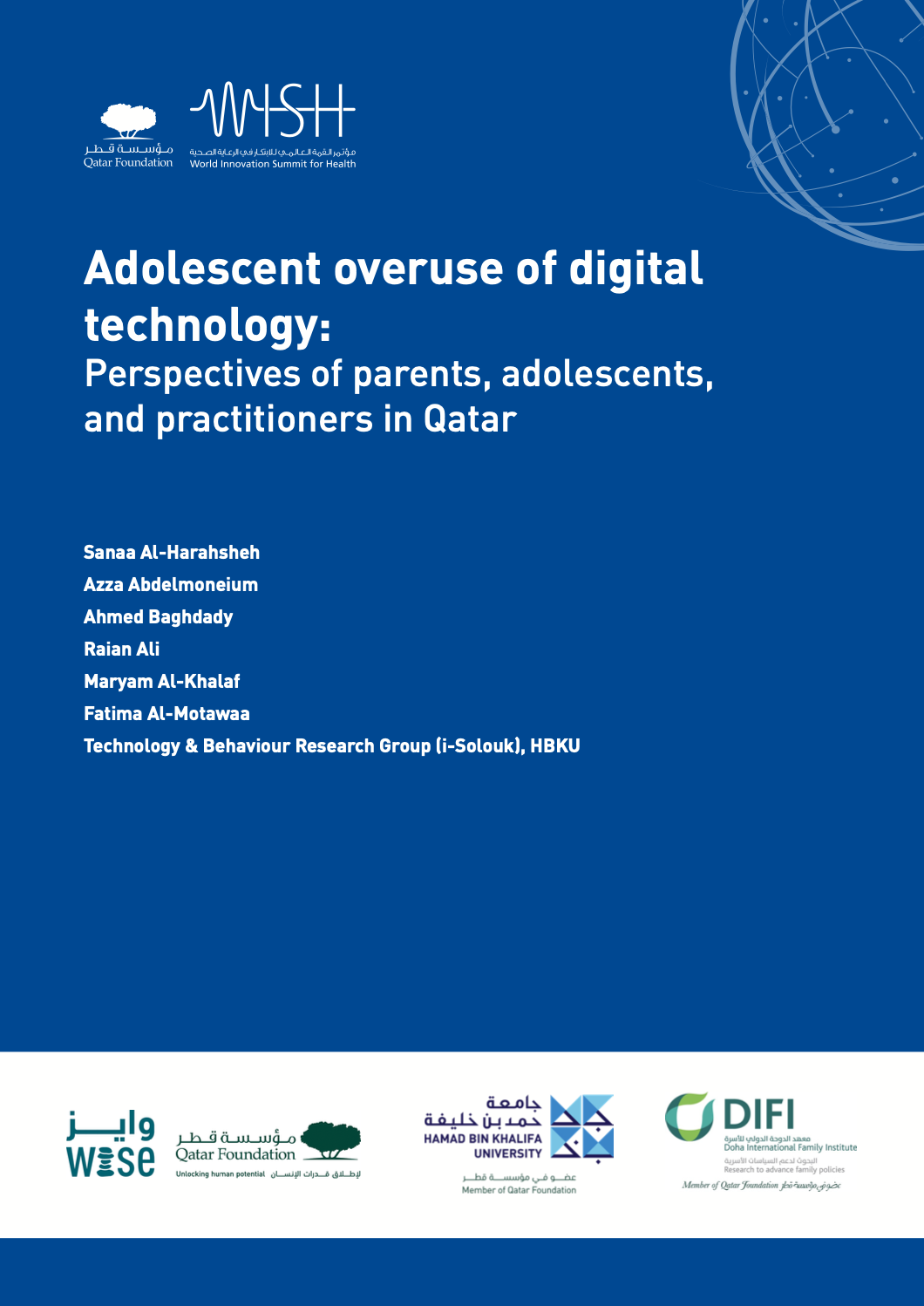ملخص تنفيذي
Overuse of technology, informally called digital addiction, is a broad term used to describe excessive, obsessive, compulsive technology use. It has been shown that such use negatively impacts health, education and family relationships. However, the majority of research to date examines this issue in adults; the perspective of adolescents has not been a focus. In this study, we examine the impact of excessive use of digital technologies on family cohesion, relationships within families, children’s health and learning, and what parents and policymakers can do to address this issue. We examine factors that influence children and parents’ excessive use of technology, as well as parents’ strategies and coping mechanisms for dealing with adolescents’ excessive technology use. With the scarcity of validated and specialized approaches to combat the issue, whether in prevention, harm minimization or treatment, we also review the services provided to families, their content, challenges they face, public perception of these services and evidence of success.
This project was implemented in two phases using both qualitative and quantitative methods. A cross-sectional quantitative survey of parents with children aged ten to 16, as well as structured qualitative interviews with parents (n=39) and practitioners (n=13), were conducted in Phase One. In Phase Two, a cross-sectional quantitative survey was conducted on a non-random sample of Qatari children aged ten -16 (n=587), as well as face-to-face qualitative interviews with 42 children.
Both phases showed that technology overuse is widespread and that most families needed help in dealing with it. The majority of parents expressed concerns over the effects of excessive technology use on their children’s health, education, and family relationships. In terms of health, both parents and adolescents mentioned headaches, physical pain, stress, anxiety and obsession as symptoms. Poor academic performance and a lack of concentration, along with changes in family relationships, were also identified by parents and adolescents. The COVID-19 pandemic has also blurred the lines of what we consider excessive and problematic technology use, as it blended study time with family time especially during remote learning.
When comparing the results of parent and children’s interviews, it appears that there is a discrepancy between their views. While parents emphasize the behavior of their children and the need for them to comply with what parents believe is good technology use, children blame their parents for being too busy and not offering an alternative. Parents use basic or simple strategies, such as controlling devices or taking them away, and using alternative activities to distract them. Similarly, adolescents said their parents use power to restrict their use of technology when they use it excessively.
The findings also indicated that discussions between parents and children remain rather vague. Parents discuss generic consequences of technology use, neglecting that technology overuse itself might be a consequence of other underlying issues. Adolescents prefer a dialogue format rather than a monologue when communicating with their parents. The results further showed that some parents have problematic internet usage, and this positively correlates with their children’s behavior. This underlines the importance of parents setting a good example for their children when it comes to technology use.
Additionally, practitioners interviewed indicated that there are no specialized treatment centers for digital addiction. The currently available approaches are for general behavioral issues. Advice on how to deal with technology use is presented in a way that is adapted from other types of problematic behaviors, such as procrastination and excess of play, whether online or not.
Awareness raising about the phenomena in Qatar is limited; parents lack awareness about digital addiction and associated risks. Overall, the results indicate a need to address the issue in a more integrated manner, where education, health, and communication sectors can support families in maintaining a balance between their use of technology and other activities that foster bonding and cohesion. In order to overcome this problem, ministries and schools must work together with families to raise awareness and provide support. This report puts forth policy recommendations which take into account the country’s cultural and social dynamics, along with children’s needs.

